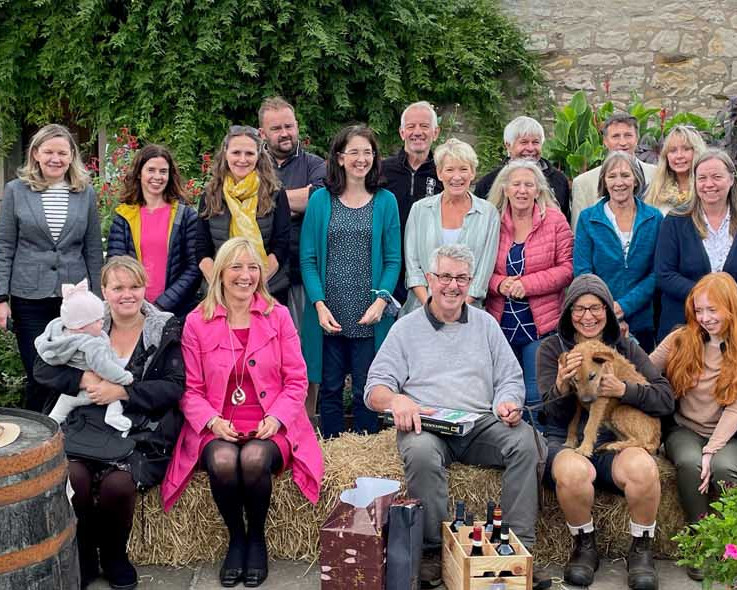Restoring Elephants’ Footprints at Winton House
This article is based on an interview with Andrew Haughton from the Nomad’s Tent who restored the carpet at Winton House. The Indian carpet is believed to be the largest, single piece, hand-woven carpet in Scotland and is more than 160 years old, designed to fit neatly into Winton House‘s drawing room.
“The elephant’s foot refers to the striking motif repeated across the field of the carpet. What looks like an ‘elephant’s foot’ is really a stylised motif known as a ‘gul’, a rose or flower, found in Turcoman rugs and carpets,” says Andrew Haughton from the Nomad’s Tent.
“The beautiful colours are typical of Indian carpets of the period, especially the deep red and soft green.”
“This carpet is highly decorative and in my mind quite beautiful,” commented Peter Willborg (a collector and dealer of rugs and carpets). Another collector, Dennis Dodds, suggested that the designs in the carpet are similar to those used in Indian screens (Jali), popular in Mughal palaces and other buildings, and also used in floor tiles.
Andrew Haughton from the Nomad’s Tent continues: “The carpet is thought to be the largest single piece, hand-woven carpet in Scotland and has been designed to fit neatly into Winton House’s drawing room. The only contender which I have found so far is at Torwoodlea in the Borders, owned by the Pringle family. The carpet there is roughly 51 square metres which is somewhat smaller than the 72 square metres of the Winton House carpet.
“It is understood that the carpet was commissioned as early as 1846, according to Winton House family records. The design could well have been proposed by a European designer, as it is not a conventional oriental design from either the Persian or Moghul traditions.
“The carpet was most likely woven over 3 or 4 years, one metre of length taking perhaps one to two months. There may have been 5 or 6 weavers working abreast on a huge loom the width of the carpet.
“After weaving it would have to be cut down from the loom and then worked on intensively to remove unevenness, straighten the sides and ends, trim the pile to an even level and then wash it. This latter process would have been done several times and served to condition the wool to ensure an even surface finish.
“We understand that after weaving, the carpet was shipped to Scotland, though en route, during the Indian mutiny of 1857-8, it was lost apparently. It may well have been transported by the East India Company.
“The carpet was assumed to be from Agra but is more likely to be from Machilipatnam* (or Masula) a coastal port in north east India. This region is less well known than Agra but the source of many carpets during the second half of the nineteenth century. Around this time demand for carpets had soared and business boomed for weavers in India and Persia, a renaissance in carpet weaving that lasted until around 1900.”
You can read more about Winton’s history here.
Why did the carpet need to be restored?
“Over 160 years of use has taken its toll on the carpet. Knotted pile is remarkably durable but with years of boots and shoes walking over it, the knots of wool gradually reduce in length (thickness) and density.
“In many places the carpet was worn down to the ‘crown of the knot’ showing just the flat surface of the knot as it wraps round the foundation warp. In large areas even this has worn away and exposed the warp itself, and in a few places actually broken the wefts. The edges were scuffed and broken in many places.
“The black wool has been subject to ‘corrosion’ due to the method of dying originally used. This included a mordant to scour the wool and make it receptive to black dye. After 100 years or so this makes the wool brittle, so that it wears down faster.”
How was the carpet restored?
“First the carpet was turned over, the old felt underlay removed along with the air filter paper. The carpet was beaten and hoovered to remove grit and then turned back and hoovered thoroughly. It was then surface cleaned by hand and, after drying thoroughly, hoovered again.
“As repiling of the kind used to weave the carpet was not an option and the solution used in past restoration work appeared to work very well, we continued that process. This consisted of flat darning large areas of the carpet such as where the surface was completely exposed and the corroded tendrils in some of the ‘guls’.
“Minor or lesser wear was treated with flat darning and fast textile dyes to strengthen the surface but also to emphasise the lines and strengthen the colours. The borders required a good deal of re-building where they were broken or worn badly and completely new selvedge was applied after this was done.
“After the restoration work was complete, fresh felt underlay was laid over a new layer of paper which acts as a barrier to air movement from the floor board gaps below. The carpet was then laid out again and the underlay trimmed to allow the carpet to extend over it.”
*This suggestion is from Michael Kennedy of Kennedy carpets who, in 1987, mounted an exhibition of spectacular Indian carpets titled ‘Jail Birds’. In the exhibition catalogue is an example of a much smaller rug made in that region, Machilipatnam. Many carpets produced at this time in India were woven in jails; hence the title.




